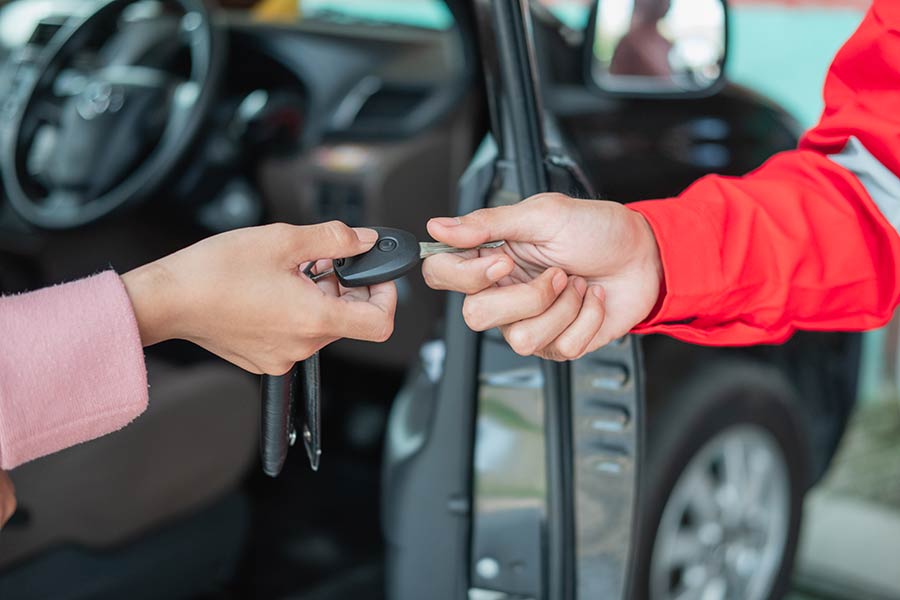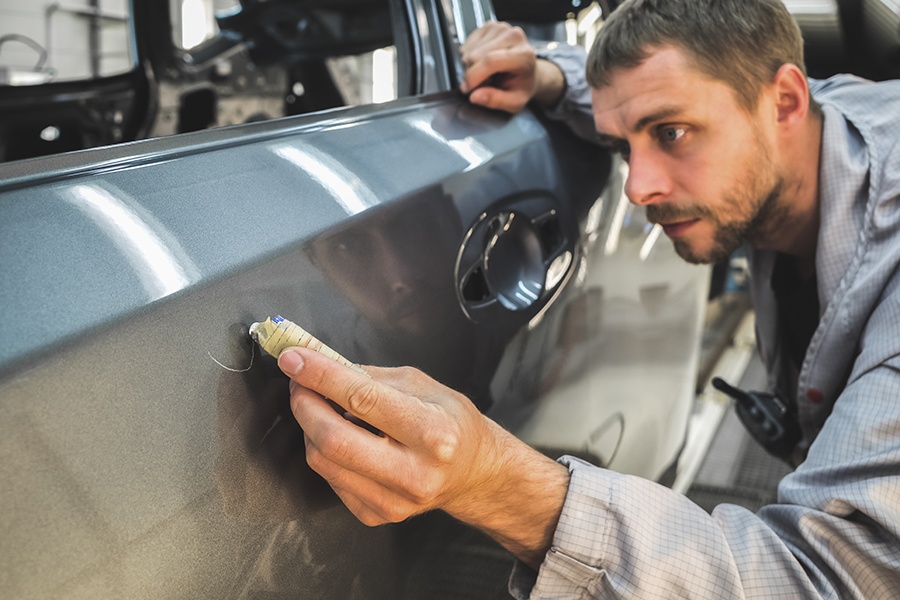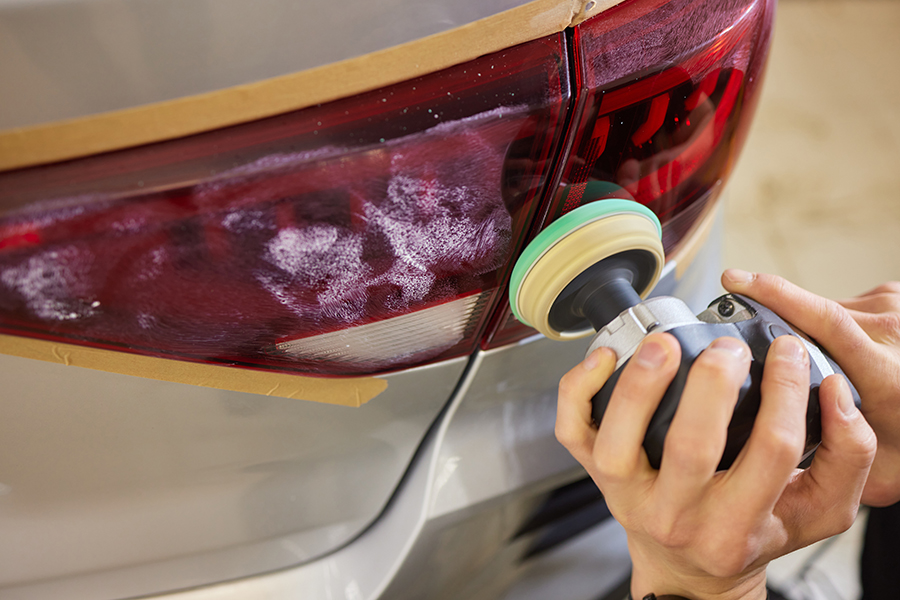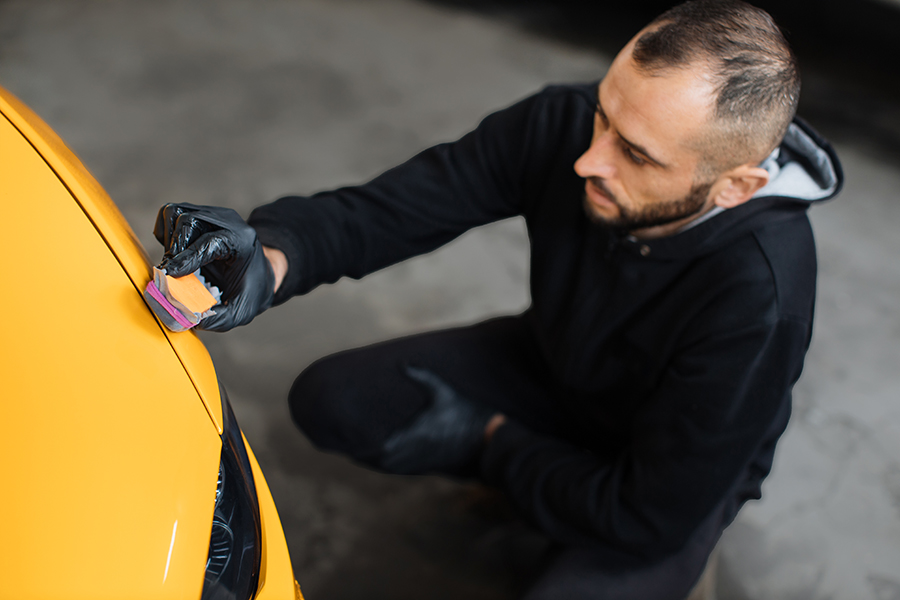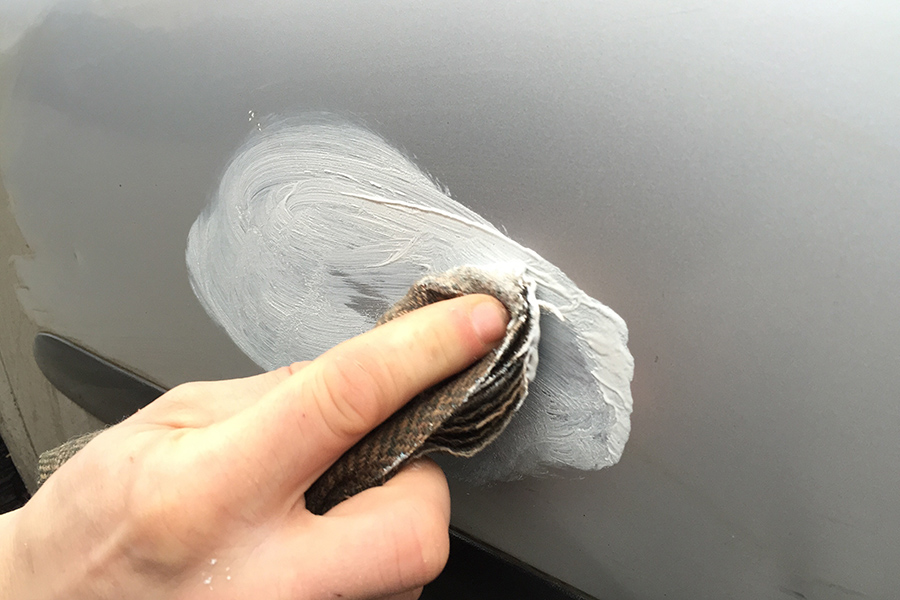Did you know 90% of leased vehicles return with some kind of damage? Among these, dents are the most common and can be a real headache if you're not prepared. When it comes time to return your leased car, those little dings and dents can end up costing you more than you'd expect. That's where lease return dent repair comes into play. It's like a magic wand for your car, making all those little imperfections disappear before the dealership gets a chance to charge you an arm and a leg. And the best part? You don't have to break the bank to get your ride looking pristine again.
Key Takeaways
- Fix dents before returning your leased car to save money on repair fees.
- Check your car early for dents to plan repairs before the lease ends.
- Using a pro for dent repair can give better results than DIY, especially with PDR.
- Paintless Dent Repair (PDR) is a good choice because it's quick and keeps your car's original paint.
- Pick a trusted dent repair service by looking at reviews and asking about their experience with leased cars.
- Schedule repairs well before your lease return date to avoid last-minute problems.
Understanding Lease Return Dent Repair
What It Is
Lease return dent repair is fixing dents before giving back a leased car. This step helps you avoid extra fees from leasing companies. It includes methods like Paintless Dent Repair (PDR). PDR removes dents without harming the car's paint. This way, the car looks good as new.
Why It Matters
Avoiding extra charges is key. No one likes surprises, especially in bills. Fixing dents keeps the car looking nice. This maintains its value. Also, it shows you followed the lease agreement. Meeting these terms is very important.
Common Charges
Leasing companies often charge for dents and dings. Small marks might cost less, but they add up. If the paint is damaged, it costs more to fix. Larger bodywork repairs can be very pricey. These fees vary but can shock you if you're not ready.
Avoiding Penalties
To dodge penalties, fix dents before returning your leased vehicle. Know what your lease agreement says about the car's condition. Keep your vehicle in good shape during the lease. This means regular cleaning and maintenance.
Preparing for Lease Return
Pre-Return Inspection
It's smart to schedule an inspection before the lease ends. This move helps you spot all damages early. You can then get estimates for any necessary repairs. Doing this saves you from last-minute surprises. It also lets you compare repair costs.
Identifying damages early gives you time to fix them. You might find some issues are cheaper to repair than you thought. This step is crucial for avoiding extra fees from the leasing company.
Documenting Condition
Taking photos of the vehicle's condition is wise. Keep these pictures safe. They prove how the car looked at different times. Make sure to keep records of all repairs done, too.
When it's time to return the car, document its condition again. These records and photos show you took good care of the car. They can help if there’s a dispute about the car's condition.
Cleaning and Detailing
A thorough cleaning of the car, inside and out, is recommended. Consider getting it detailed, too. Detailing can make the car look almost new again.
Focus on removing any stains or odors. A clean and fresh-smelling car leaves a good impression. It shows you've maintained the vehicle well.
Removing Accessories
Take off any personal accessories or aftermarket additions. If possible, put back the original parts. Check your lease agreement for specific rules about modifications.
e leases allow small changes, but others don't. Removing these items ensures the car meets the lease return standards.
DIY vs Professional Dent Repair
Pros and Cons
Choosing between DIY and professional dent repair can be tough. Each option has its ups and downs.
DIY repairs can save you from lease return penalties. They also help keep your car's value up. But, costs and time can add up. You might spend on tools and materials. Learning takes time too.
Professional services cost more. Yet, they bring expertise and speed to the table. You won't worry about doing it wrong.
Cost Comparison
The price of fixing dents varies a lot.
DIY methods are cheaper upfront. You might only need a few tools and kits. These could cost less than $100 for small dents.
Professional repairs range in price. A minor fix might be $50 to $150. Major ones could hit over $500. The choice between DIY or pros depends on the dent size and your budget.
Time and Effort
Time is precious when returning a leased car.
DIY fixes demand hours or days. It's all about your skill level. First-timers might struggle more than car enthusiasts.
Professionals can often do it faster. They have the tools and know-how. This makes them a go-to for those short on time.
Quality of Results
Quality matters most at lease end.
DIY repairs risk being less perfect. Without experience, you might not get a flawless finish. This could lead to lease penalties.
Professionals aim for perfection. Their work should leave no trace of damage. Choosing them can mean avoiding extra lease fees.
Benefits of Paintless Dent Repair (PDR)
How PDR Works
Paintless Dent Repair, or PDR, is a skilled technique. It fixes minor dents from the vehicle's body. Technicians use special tools to massage dents out. This method does not require repainting. It's great for small dents and dings. Most people prefer it because it keeps the original paint intact.
Cost Efficiency
PDR stands out as a cost-effective repair method. It often costs less than traditional bodywork. This is because it skips the need for new paint or fillers. Over time, choosing PDR can save money. Especially, it helps avoid lease return penalties. These penalties can add up if a car has many dents.
Time Efficiency
One big advantage of PDR is its quick turnaround. Traditional repairs might take days or weeks. But, PDR often offers same-day service. This makes it very convenient for car owners. They don't have to be without their vehicle for long.
Maintaining Vehicle Value
Keeping a car dent-free helps preserve its value. A well-maintained vehicle can have a higher resale value. Also, cars in good condition get better results at lease-end inspections. This can save money and stress when returning a leased vehicle.
Choosing a Dent Repair Service
Research and Reviews
Before you choose a dent repair service, research is crucial. Look up local repair shops online. See what others say about them. Customer reviews and ratings can tell you a lot. They help you see if a service is reliable. It's important to pick a shop that has good feedback. This means they do quality work.
e shops are known for their excellent service. You want one of those. Their reputation matters because it shows they care about their work. Good reviews often mean happy customers. And happy customers usually mean the shop did a great job.
Service Guarantees
Always check if the repair shop offers guarantees. These promises can give you peace of mind. If something goes wrong, they'll fix it at no extra cost. Ask them about their satisfaction guarantees too. This shows they stand behind their work.
A guarantee means they're confident in their service. It also means you're protected if the repair isn't right the first time. Shops that offer warranties care about keeping their customers happy. That's a good sign.
Pricing and Estimates
It's smart to get multiple estimates before deciding on a service. Prices can vary a lot from one shop to another. Make sure they're clear about their pricing too. Ask for a detailed breakdown of the costs involved.
Transparent pricing is important. It helps you understand exactly what you're paying for. No surprises later is always good. Shops that offer clear, detailed estimates show they're honest and trustworthy.
Location and Convenience
Think about where the shop is located. A nearby repair shop makes things easier for you. But don't forget about mobile repair services either. They can come to you, which is super convenient.
Also, consider the shop's hours and if they fit your schedule. Availability matters when you need to get your car fixed fast. Some shops even offer loaner cars while yours is being repaired. That's a big plus for convenience.
Scheduling Repairs Before Lease Return
Timing Considerations
It's smart to schedule repairs a few months before your lease ends. This gives you plenty of time. Sometimes, repair shops are very busy. You might have to wait longer than you think. Planning ahead saves you stress.
Busy times, like holidays, can make waiting times longer. If you plan early, you won't have to rush. This helps you avoid extra fees at the lease end.
Booking an Appointment
You should book your repair appointment early. Many places let you book online. This is easy and fast. Always double-check your booking details a few days before. Make sure you know the date and time.
Online options are handy. You can pick a time that works for you without calling. Remember to confirm your appointment. It's important to make sure everything is set.
Preparing the Vehicle
Clean your car before taking it in for repairs. This shows respect for the repair team. Also, take out all your stuff from the car. You don't want to lose anything.
Look over your car closely. You might find more dents or problems. It's good to fix everything at once. This way, your car will be ready when you return it.
Post-Repair Inspection
After repairs, look at your car carefully. Check if they missed any dents or issues. You want your car to look its best.
Make sure the work is done well. If something doesn't look right, tell the repair shop right away. Good work is important.
Avoiding Common Mistakes
Ignoring Small Dents
It's easy to overlook small dents. Yet, this can lead to big problems. Leasing companies often charge for any damage. This means small dents can add up in costs. It's wise to fix all damages, big or small. This avoids unexpected charges at the end of your lease.
Small dents seem minor. But fixing them can save you money and trouble later. Always address every dent to keep your car in good shape.
Last-Minute Repairs
Waiting until the last minute is a bad idea. Doing this often leads to rush fees. Repair shops charge more for urgent work. You also risk getting back a car that's not fixed well.
Urgent repairs might not be done right. Planning ahead saves you from paying extra and getting poor-quality work. Make sure to schedule repairs with enough time.
Overlooking Documentation
Keeping all repair receipts is crucial. They prove you fixed the damages. Document your car's condition before and after repairs too. This shows the leasing company the work was done.
Providing proof of repairs is important. It helps avoid disputes over damages. Keep all documents safe and ready to show when returning your lease.
Not Understanding Lease Terms
Reading your lease agreement is key. It tells you what condition your car must be in when you return it. Look for terms about vehicle damage and wear.
If something is unclear, ask the leasing company for help. They can explain what is expected of you. Understanding your lease helps avoid surprises at the end.
Maximizing Lease Inspection Value
Detailed Cleaning
Getting your leased car professionally detailed can make a big difference. These services know how to clean hard-to-reach areas. They make sure every part of your car looks great.
A spotless interior and exterior are key. They show you've taken good care of the car. This can help during the lease inspection.
Professional Assessment
It's smart to get a professional assessment of any damages. Experts can give you advice on what repairs you need. They know how to spot problems you might miss.
Professionals can also give you an accurate cost estimate for repairs. This helps you understand what you're dealing with before the inspection.
Addressing Wear and Tear
Knowing the difference between normal wear and tear and damage is important. Normal wear includes things like minor scratches. Most leases allow for this.
But, if there's excessive wear, you should fix it. This avoids extra charges when you return the car. Paying attention to this detail can save you money.
Final Touch-Ups
Before returning your vehicle, do some final touch-ups. Polishing and waxing can give your car a pristine look. It's like making a good last impression.
Make sure to fix any minor issues you might have overlooked earlier. This shows that you've maintained the vehicle well throughout the lease.
Additional Tips for Lease Returns
Mileage Management
Keeping an eye on your mileage is key. Most leases have a mileage limit. Going over can cost you. It's smart to track how much you drive. This helps avoid surprises.
Plan your trips wisely. Staying within your mileage allows you to dodge extra fees. It's all about being mindful of how much you drive.
Handling Residual Value
Residual value is what your car is worth at the end of the lease. It's a big deal. The better shape your car is in, the higher this value will be.
Your car's condition directly impacts its residual value. Keeping it in good shape pays off. If you're thinking of buying your leased car, talk about buyout options. The car's condition can give you leverage in negotiations.
Disposition Fees
When your lease ends, you might face disposition fees. These are common. They cover the cost of prepping the car for resale.
You can sometimes get these fees waived. It's worth asking your leasing company about it. Have a chat with them to understand these charges better.
Early Termination Costs
Ending your lease early can be costly. There are usually penalties and fees for this. It's important to know what these are upfront.
Understanding your lease terms is crucial before considering early termination. This way, you avoid unexpected costs.
Closing Thoughts
Navigating the end of your lease doesn't have to be a headache. Armed with knowledge on dent repair and preparation strategies, you're now in a solid position to tackle lease returns like a pro. Whether you choose DIY fixes or professional help, understanding the ins and outs of paintless dent repair (PDR) and selecting the right service can save you both time and money. By avoiding common pitfalls and maximizing your car's inspection value, you're setting yourself up for a smoother transition.
Remember, every dent fixed and every tip followed brings you closer to acing that lease return inspection. So, roll up your sleeves, plan your repairs, and don't wait until the last minute. Your wallet—and peace of mind—will thank you. Now, go out there and show that lease return who's boss!
Frequently Asked Questions
What is lease return dent repair?
Lease return dent repair is fixing dents and dings on a leased vehicle before returning it to the dealer. It's like giving your car a quick facelift to avoid extra charges.
Should I attempt DIY dent repair or hire a professional?
Stick with professionals for dent repairs. DIY can be tempting, but a botched job might end up costing you more in the end. Pros know their stuff and can save you both money and headaches.
What are the benefits of Paintless Dent Repair (PDR)?
PDR is a game-changer. It's quicker, cheaper, and doesn't mess with your car's original paint job. Think of it as surgery without the scars.
How do I choose a dent repair service?
Look for experience, reviews, and guarantees. A good dent repair service is like a good doctor - skilled, trusted, and makes you feel confident in their care.
When should I schedule repairs before my lease return?
Don't wait until the last minute. Aim to schedule repairs a few weeks before your lease ends. This gives you a cushion in case anything needs a do-over.
What are common mistakes to avoid in lease return preparation?
Rushing and cutting corners are big no-nos. Skipping professional repairs or ignoring small damages can lead to bigger bills later. Treat it like prepping for an important exam - thorough and well in advance.
Any additional tips for maximizing my lease inspection value?
Yes! Clean your car inside out and document all repairs. It's like dressing up for a first date; you want to make the best impression possible.
